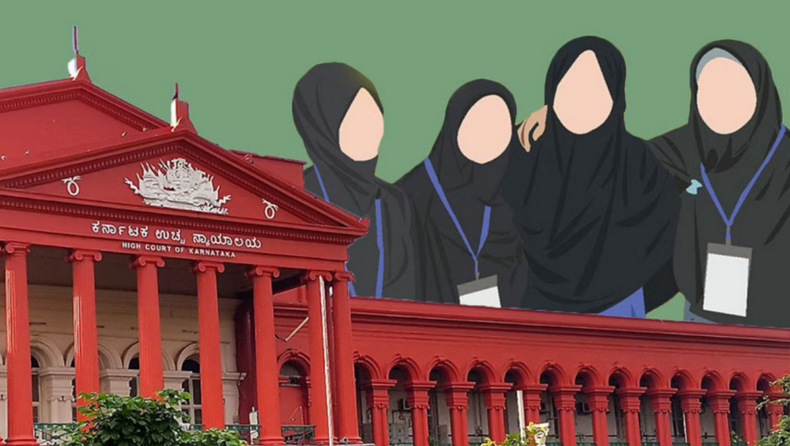The judgement on Hijab argues on institutional norms which doesn’t hinder fundamental rights of Islamic faith.
- Karnataka High Court announced the verdict on Hijab row by stating wearing hijab in institutional boundary is not an essential religious practice therefore they do not violate the fundamental rights.
- The judgement of the judges of High Court is on the uniformity grounds which is of reasonable restriction and is constitutionally permissible.
- Uniforms are institutionally driven that promotes equality and harmony among students and builds a common ground to educate oneself in an equal environment.
- It doesn’t violate the practices of Islamic faith as wearing of hijab was never a mandate neither in schools nor outside the institutional space.
- Imposition of uniform may question the restrictions on individual rights of a citizen but does it hurt the very urge and right to education? Not really.
- A place that brings people from different religious and cultural background together to sense the secularism, equality, common brotherhood with uniforms leaving behind the strict practices by transcending religious and sectional diversities within the institutional forum as school uniforms are universal requirement.
- Although, this step towards egalitarianism may reflect the society and hence turn unwelcoming towards the Muslims.
Social Separateness
Allowing to wear hijab in school campuses could be permitted but this argument can lead to social separateness in schools with two different sections of girls following two different norms of school wherein one is permitted and other isn’t. With a reasonable restriction on Muslim girls, the verdict
doesn’t violate their right to freedom of expression (Article 19 (1)), right to equality (Article 14), right to no discrimination (Article 15) and neither does it violate right to religious freedom (Article 25). But this should also be subjected to other religious practices in schools.
Education of Muslim girls
The education of girls has already been challenging in the society especially Muslim girls who are not even allowed to educate themselves, may be restricted to study in coed or non-sectarian schools due to the judgement on hijab row.
However, the society looks for evolving modernization by instilling a sense of secularism, the faith in one’s religion can affect a section of society at large which can result into the uneducated society of women, later leads to unemployment.
This will refrain Muslim girls from studying in non-sectarian school and might opt for religious schools.
Political Narrative
Currently, the nation is divided into majority of Hindus and Muslim minors. With an advent in the verdict of Hijab row, the liberal and minor side labels the judgement as a political narrative.
The support for bhagwa color and opposing hijab or headgears in educational institution narrates a political theory of Hindutva ideology due to the current ruling party.
And this certainly has turned into a new political war between Hindus and Muslims which will affect Muslim women who wish to educate in a non-sectarian educational institution.
Rigid Religious Practices for Women
The society is a witness of the wrongdoings with women and Muslim women are no different.
The practice of hijab, burkha or purdah is not an essential religious practice but was inculcated for the security of women.
Since years society is trying to secure women from who? The society itself. This practice has disallowed women in believing in modernization and hence women following this Islamic faith have restricted themselves to evolve in decision making for their freedom to choose instead suppress women in the society.
On the broader point, High Court’s verdict on hijab row is for better as the judgement uplifts the society from many aspects such as quality of education, equality among students, women’s participation in equal sphere, secular and modern thinking, establishing a uniform structure and harmony. Therefore, the questions that inhibit the religious issues should not refrain egalitarianism above religious beliefs.












